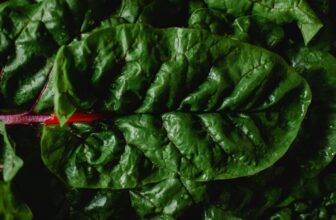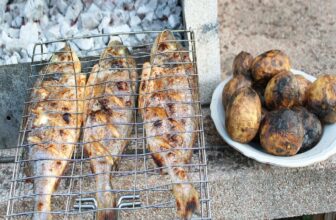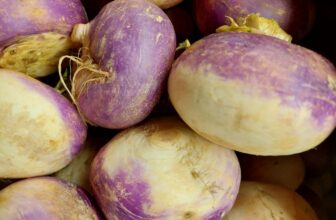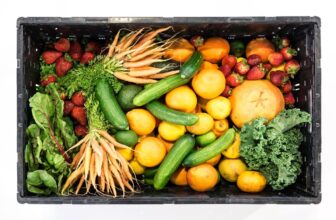
If climate change heads in the direction of warming, the yield of the wonderful root vegetable potato will fall to a trickle.
But there is an alternative – a vegetable rightly called the “sweet potato”. Its official name is yam. We are interested in it primarily because it perfectly tolerates high temperatures, requires little watering, and can be stored for up to six months. In addition, in Canada, a clever method has been developed that allows you to successfully grow yams in different climates.
General facts
The yam is a species of tuberous perennial plants of the tuberous family. It is also a distant relative of the potato. This plant is native to Peru and Colombia, and it was domesticated so long ago that its wild predecessors are no longer found. It is also not known how sweet potatoes arrived in New Zealand and Polynesia.
Then the Spanish colonizers became acquainted with yams and immediately rushed to bring it to their homeland. The warm climate contributed to abundant harvests, so yams have long been commonplace in Europe.
If we talk about the nutritional value of sweet potato on average, not taking into account the huge number of different varieties, it has almost as much protein and fat as potatoes. Its content of carbohydrates is much more due to the large content of various sugars and glucose. In addition, yams contain retinol (vitamin A), B vitamins, ascorbic acid, and vitamin K. There is much more calcium, sodium, and zinc in yams than in potatoes, and other micronutrients are at about the same level.
Planting
Sweet potato has been cultivated for so long that it has practically ceased to be propagated by seed. So now you have to use mainly vegetative propagation.
As for soil, yam prefers sand, sandy loam, or loam. That is, the quality of the soil is not important at all; the main thing is that it is not too wet. This is especially useful in those conditions when there is no access to normal fertile soil. As for fertilizers, the main attention should be paid to those that contain nitrogen, potassium, and calcium. They are introduced in the fall, before the beginning of cultivation, just before planting, and towards the end of summer.
Care
Since yam is a drought-resistant crop, it is not necessary to water it additionally. The exception is the first month after planting, as the cuttings need to take root. After that, you can water only occasionally. Also, yams are very resistant to diseases and pests, since the most harmful of them remained on the American continent. However, some European bugs also like yams. The main attention will need to be paid to the fight against cutworms, wireworms, spider mites, and May beetles. In short, almost all typical potato pests.
From the moment of planting to the beginning of leaf drying, which indicates the cessation of metabolic processes and the need to harvest, passes from 100 to 140 days, depending on the variety of sweet potatoes.
Harvesting
Harvest yams towards the end of September, when the temperature no longer allows the vegetable to grow normally. Dig up the tubers either with a shovel or with a fork. It is necessary to act very carefully, so as not to damage the root vegetables – otherwise, they can not be stored for a long time.
Before direct storage, the yam must ripen. To do this, put the root crops in a warm room (temperature from 30 degrees Celsius), which is well-ventilated and where humidity is maintained at a level of 80-90 percent. The yam crop should lie there for 5 days – during this time, an additional peel will form around the roots, which will prevent further loss of liquid and seriously increase the shelf life. This procedure is also called “curing the yam” because the new skin covers any minor damage it sustained during digging and initial transportation.
Canadian method
The problem is that the yam can grow only in the soil, the temperature of which is close to 20 degrees Celsius, and at 15 degrees Celsius in general, completely stops any metabolic processes. But this applies only to the formation of root crops and other underground parts. That is why it is enough to insulate the soil intensively, so that yams can grow safely. And for this, you can use the usual greenhouse effect.
We will need a transparent plastic film. A lot of film. We lay the film on the ground, sprinkle it, and seal it as much as possible. The sun’s rays will heat the ground and cause a greenhouse effect. The ground will warm up, and weeds, whose seeds may have remained in the ground, will die without fresh air.
When the cuttings of yam grow to the desired condition, act as follows. Cut a hole in the film with a diameter of 20 cm, press the surrounding film down, and form a bowl-shaped area with a hole in the middle. Plant the cuttings in it and fill it with sand or other loose material. That’s it. Root crops will be sufficiently insulated under any arrangement, and they will have enough time to mature.
The author of this method is Allan Ken from Canada. He wrote the book, describing the whole process! He has grown yams this way since the mid-eighties of the last century. And there were no failures so far.
So take the information into account. You never know how life will turn out. Experiencing global changes is easier if you have the supplies, skills, and knowledge. Stay safe!




